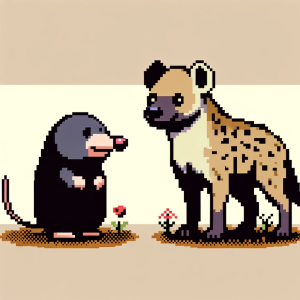
The Gendered Evolution of Disney Protagonists
Imagine your childhood hero standing before you: a Disney protagonist who captured your imagination and taught valuable life lessons. Whether it was Snow White’s unwavering kindness, Aladdin’s bold adventures, or Moana’s fierce determination, these characters have left a lasting impression on generations. But what do these characters tell us about gender roles and stereotypes over time?
A recent study conducted by researchers from multiple universities sought to answer this very question. They analyzed 39 Disney protagonists from films released between 1937 and 2021 to uncover how male and female characters’ behaviors have evolved and how gender stereotypes have persisted or changed.
Research Significance:
The researchers employed a meticulous quantitative approach to examine the behavior of Disney characters. By categorizing traits as either masculine, feminine, or neutral, they identified patterns in how these traits are portrayed across different time periods. Understanding these trends is crucial, as children internalize messages from the media they consume, which can significantly impact their perception of gender norms.
Key Findings:
- Female Protagonists: Despite some shifts in how female characters are portrayed over time, they generally retain stereotypically feminine traits. For instance, while characters like Moana (2016) and Raya (2021) are less focused on romance and more on adventure, their behaviors are still largely aligned with feminine norms. The study also highlights a consistent portrayal of emotional expression, nurturing, and kindness among female characters.
- Male Protagonists: Male characters show a surprising blend of traits, with many protagonists demonstrating higher levels of feminine behaviors than masculine ones. In “modern” films, such as “Frozen” (2013) and “Tangled” (2010), male protagonists are often portrayed as compassionate, caring, and vulnerable. However, masculine traits such as physical strength and heroism continue to play a significant role.
Implications and Discussion:
These portrayals raise important questions about the impact on young viewers. If male protagonists exhibit more feminine traits, does this challenge traditional gender norms? And if female characters are shown as nurturing yet assertive, how does that shape young girls’ perceptions of themselves?
While progress has been made in diversifying these portrayals, there remains room for improvement. Despite Disney’s efforts to present well-rounded characters, some stereotypes linger, possibly reinforcing outdated notions of gender roles. However, the inclusion of non-romantic storylines and androgynous behaviors signals positive strides.
Conclusion and Discussion Questions:
In the end, Disney’s animated protagonists have traveled a long journey from Snow White’s domestic kindness to Moana’s spirited leadership. This study serves as a reflection of our evolving societal norms, showing that while stereotypes persist, change is happening.
Discussion Questions:
- How might evolving gender portrayals in children’s films affect societal norms over time?
- Should Disney and other studios do more to challenge stereotypes, or are current portrayals moving in the right direction?
Embark on a Scientific Adventure:
Dive into the world of science with our weekly newsletter! It’s perfect for teachers and science lovers who want to stay up-to-date with the newest and coolest discoveries. Each issue is filled with the latest research, major breakthroughs, and fascinating stories from all areas of science. Sign up for free and take your teaching and learning to the next level. Start your journey to becoming more informed and in tune with the constantly changing world of science. Subscribe today!
About the Author
Jon Scaccia, with a Ph.D. in clinical-community psychology and a research fellowship at the US Department of Health and Human Services with expertise in public health systems and quality programs. He specializes in implementing innovative, data-informed strategies to enhance community health and development. Jon helped develop the R=MC² readiness model, which aids organizations in effectively navigating change.



